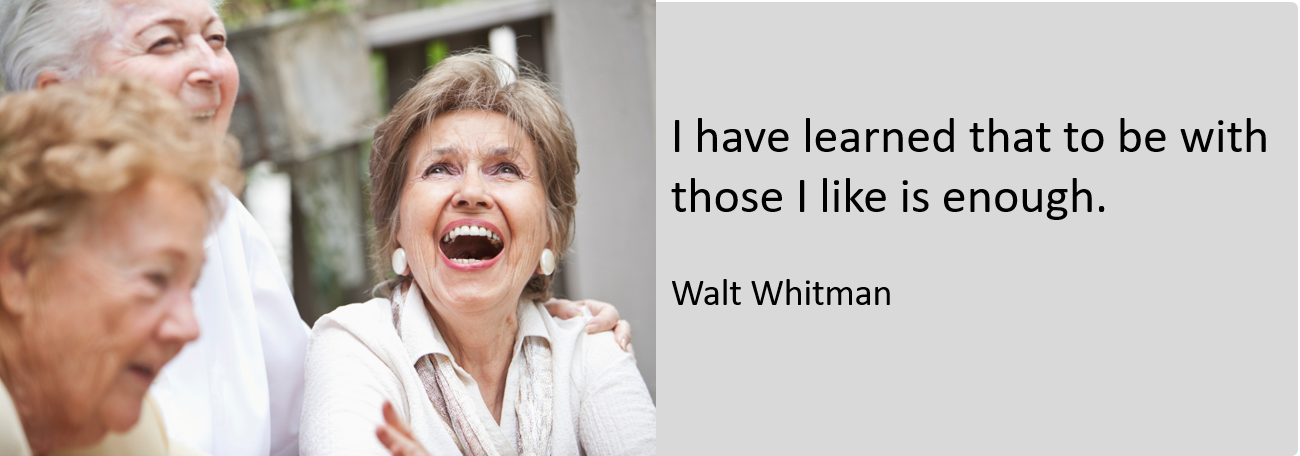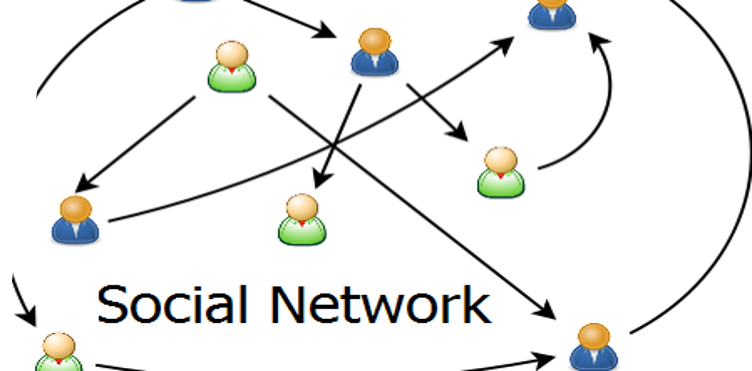Social networks make a difference. Prepandemic research highlighted concerns about the state of our social networks.
Angus Reid published detailed research revealing a portrait of social isolation in Canada.
The study sorted Canadians into five groups:
- Desolate (23%),
- Lonely but not Isolated (10%),
- Isolated but not Lonely (15%),
- Moderately Connected (31%), and
- Cherished (22%).
Now put those findings up against the research that shows that…
A poor or limited social network increases the risk of dementia by 60%
And the startling conclusion is that almost 50 percent of Canadians could reduce their dementia risk if they had a better social network.
The importance of social engagement was reaffirmed by research published this month. Social engagement was related to greater structural integrity of the brain’s grey matter. Those who were more socially engaged had stronger brains.
As we come out of the pandemic and start to reconnect, it is worthwhile to consider your own social network.
And if you care for or have someone in your life who suffers from dementia, you need to think about their social network too.
Measuring Your Social Network
How do you measure whether you have a healthy social network?
And how do you measure your loved one’s social network?
Further, if your social network (or theirs) is not as good as it could be – what can you do to improve it?
In this post I want to tackle those questions.

Consider Three Factors
Research identifies three factors for measuring the efficacy of social networks.
The first factor is identifying the existence and extent of your social network.
So … do you have a social network?
Make a list of people that you believe are part of your social network. They can be family, friends, or acquaintances. People you regularly interact with during your day-to-day travels.
To generate your social network list, you might find it easiest to start with a list of family members. Completing a list of friends or acquaintances can be a little more difficult.
A great way to do this is to generate a diagram for your social network.
Start by placing each activity that you partake in into a separate bubble. The gym might be in one bubble, while the library or grocery store in another bubble. Your church or volunteer activity might be in another bubble.
Attach to each bubble all the people that you see and interact with during that activity. Make sure you include the receptionist at the doctor’s office, the trainer at the gym, the cashier at the grocery store in your diagram.
Secondly, how often do you have contact with the people in your network?
Beside every name on your list indicate when you last had contact with them. Do you typically interact with them on a daily, weekly, or monthly basis?
Make a notation beside each name. Use D for day, W for week, M for month or Y for yearly.
You may think that the individuals you interact with most have the highest impact on mental well-being.
However, the research shows that the level of satisfaction over the interaction is even more important than the number of times you interact.
This does not mean that frequency does not matter. It does. But quality of interaction goes a long way to making up for lack of quantity. Obviously the very best outcome is high satisfaction and high rates of interaction.
The final step is to rate the quality of the interactions.
How satisfying (from your perspective) is the interaction you have with each person on your list?
Look at each name and rate the levels of your interactions based on a 1, 2, or 3. Where
- 1 is NOT very positive,
- 2 is positive and
- 3 is VERY positive.
Having positive interactions with the people in your social network is important. But it is a subjective test. What matters most is your level of satisfaction with the interaction.
Relationship Interactions Rated Very Positive
So now take a few minutes to look at your list. Look at the individuals who you have ranked as a three (3). Are there ways you can increase the frequency of interactions with that individual? Do you enjoy shared activities that you could engage in more frequently?
Of course, choosing to interact with the most satisfying relationships more often, is an easy step to take.
Relationship Interactions Rated Positive
Now look at the relationships that you ranked as a two (2). Those relationships are important to you but could be better. So, take some time to think about ways to improve those relationships. Spending time together in a mutually satisfying past-time can be a great way to build that relationship. When you get to know someone more deeply, your relationship tends to improve. Shared experiences can help make that a reality.
Also consider the rule of reciprocity. When you do a something for another human being, there is an innate desire to reciprocate. Usually the individual will respond positively to a positive. So make positive overtures and build the relationship.
For more ideas about improving these relationships, you might want to take the Kindness Challenge.
Relationship Interactions Rated Not Very Positive
Finally, look at your social relationships that you have ranked as one (1). Maintaining good mental health may mean limiting interactions with people who are not positive.
I’m not recommending that you immediately cut people out of your life. Some relationship may be salvageable. That person may be going through a rough time and you will be able to repair and restore the relationship. But be realistic.
Toxic relationships are a negative impact on your mental health. So take a good look at the interactions you have. Reduce the bad and amplify the good.
I strongly encourage you to think about your social networks and spend some time building and nurturing them. With poor social networks increasing dementia risk by 60%, the payoff can be huge. And with only 22% of Canadians reporting that they are not isolated – it is likely your social networks need some attention.

Now what about your loved one who suffers from dementia?
How do you make sure they have satisfying social relationships and supportive social networks?
If they live with you or are in a home care situation, this is usually a little easier to figure out. You have more visibility into who is entering and leaving. You know what outings your loved one goes on. You can approach a social diagram in the same way as described above.
Group By Place
Begin by grouping social interactions around places. Who do they see at home? Who do they see at Church? Who do they see at the doctor’s office? Using pictures to create your network diagram works better. Have a head-shot of the people involved instead of just relying on their names or functions.
If your loved one lives in a care environment, this can become a little more challenging. It is still worth doing. An individual living in a care environment still has high needs for social interactions. Studies show that individuals with dementia who say they have good relationships, still want more interactions.
Diagramming their social network has positive results.
Whatever your loved one’s situation, diagramming their social network with pictures can have a very positive effect. A picture diagram of their social network will give them a touch point. And it will help them recall who is in their network and facilitate their interactions. They will feel more confident about matching names to faces. As well, their ability to interact with the staff of the residence and their peer group will be enhanced.
Add Names to Pictures
When creating the picture diagram, make sure you add the names of the individuals. This is a helpful prompt for anyone struggling with memory issues. I have seen photo albums backfire for families because their loved one cannot easily recall the names. Looking at the photos becomes an exercise in frustration.
A picture diagram will allow staff to understand your loved one’s family network. It will give them opportunities for conversation and reinforcement of those relationships.
Deceased Spouses or Siblings can still be socially sustaining.
You may even choose to place pictures of a deceased spouse or siblings on the family network. Studies show that individuals still gain support from relationships, even if that individual has died. The positive memories can be socially sustaining.

Relationships of deceased love ones can be socially sustaining.
Finally, completing the diagram exercise will help you assess in a very visual way, whether or not your loved one has sufficient social support.
Ideally, there should be relationships that rank a three (3) on their diagram. They should not be feeling isolated and lonely and this diagramming process can help you discover how they feel.





0 Comments